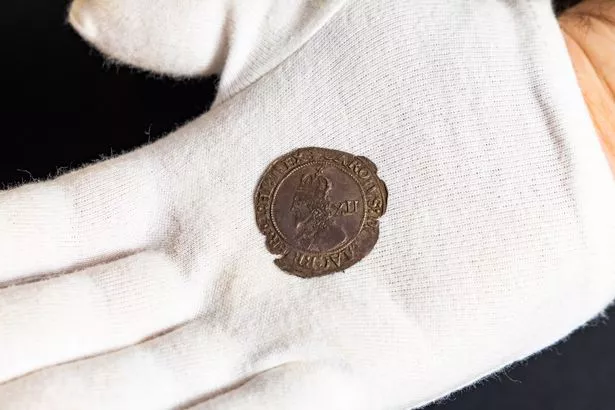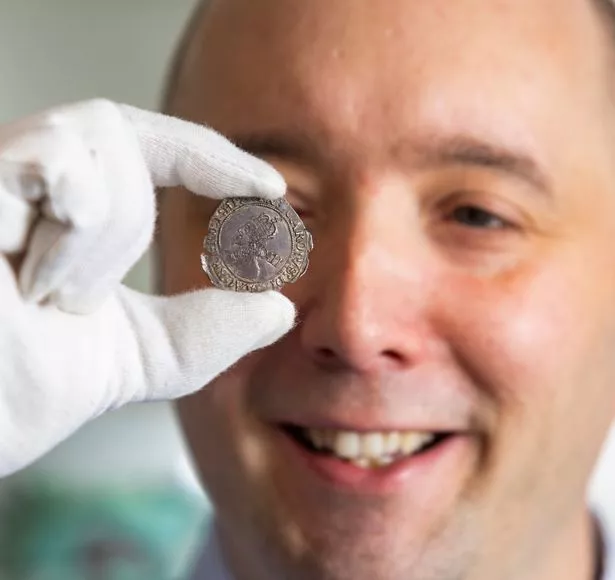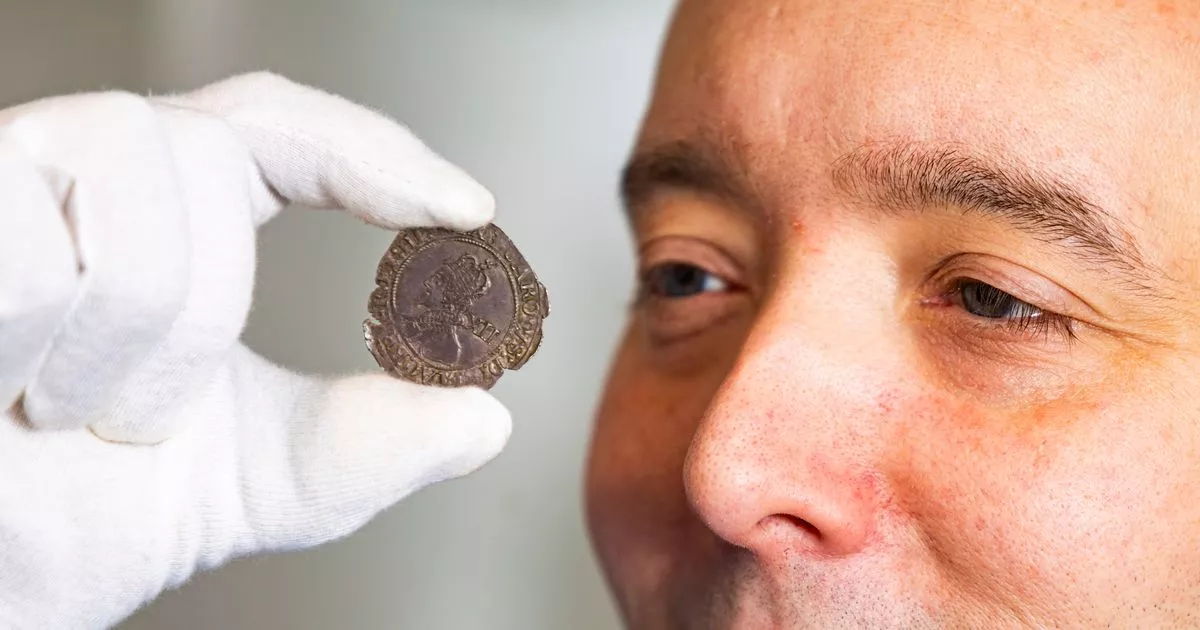The coin was discovered in Bristol and is set to go on auction on November 19 A rare Bristol shilling minted in 1643 is set to fetch more than £3,000 at an auction this month(Image: Tom Wren© SWNS)
A rare Bristol shilling minted in 1643 is set to fetch more than £3,000 at an auction this month(Image: Tom Wren© SWNS)
A 400-year-old coin printed as “political propaganda” during the Civil War is expected to fetch up to £3,000 in an auction.
The “exceptionally rare” 1643 Charles I Bristol shilling was only minted for a very brief period during the Civil War and is one of only a handful known to still exist.
Only a handful of such coins are known to survive and most of those are owned by museums or other institutions.
The rare coin was discovered in Bristol and is now set to sell for thousands of pounds later this month at auction.
Auctioneer Andrew Stowe from Auctioneum Ltd in Bristol, said: “Not only is it a superbly rare coin but the chance to own one appears to be even rarer. They almost never come up for sale.
Join the Manchester Evening News WhatsApp group HERE
 The coin, minted in 1643, is set to go on auction on November 19 in Bristol(Image: Tom Wren© SWNS)
The coin, minted in 1643, is set to go on auction on November 19 in Bristol(Image: Tom Wren© SWNS)
“As a Bristolian myself, I’m always fascinated by the history of our city and to hold something nearly 400-years old with such an important connection to the city is nothing short of incredible.
“This is far more than just a coin, it was an important piece of political propaganda, and an important part of our city’s history.’”
It’s expected to fetch more than £3,000 when it goes under the hammer at Auctioneum Ltd in Hanham, Bristol, as part of their specialist Coins & Banknotes auction on November 19.
The coin is referred to as a Declaration Coin, named after Charles’ Wellington Declaration of 1642. At this pivotal speech at Wellington, Shropshire, the King declared his commitment to defending “the Protestant religion, the laws of England, and the liberty of Parliament”.
The declaration largely signalled Charles’ intent to go to war with parliament and was one of the factors that started the English Civil War.
By way of spreading his message and to rally support, Charles I ordered several small regional coin mints be opened to create coins carrying his image.
These ‘Bristol Shillings’ were one of the earliest types of coinage made at the newly established Bristol mint, using dies that Thomas Bushell had bought with him from the Oxford Mint, after he was sent by the King to establish a mint there.
 The 400-year-old coin was printed as ‘political propaganda’ during the English Civil War(Image: Tom Wren© SWNS)
The 400-year-old coin was printed as ‘political propaganda’ during the English Civil War(Image: Tom Wren© SWNS)
The only alteration to the original dies were the addition of three large Bristol Plumes above the declaration on the reverse.
During the English Civil War, Bristol was a key port on the west coast of England and considered strategically important by both Royalists and Parliamentarians.
Initially, the leadership of Bristol wanted to keep the city neutral in the conflict. For Charles I to have his coins minted in the city was a described as a real shot across the bow of the Parliamentarians.
